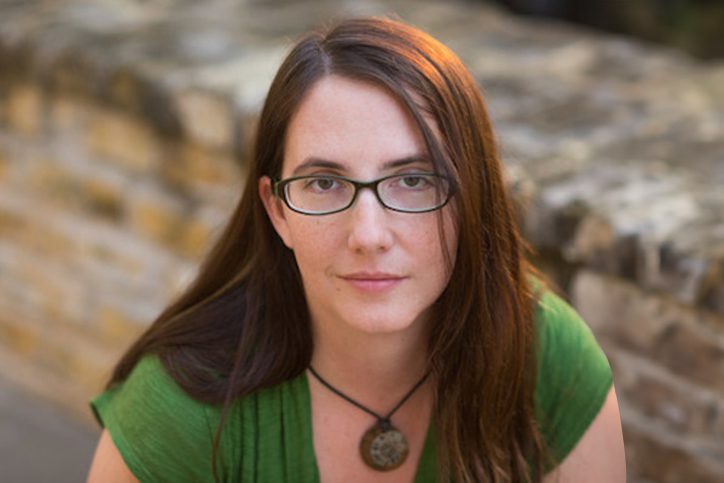 Assistant Professor Megan Reilly says social awareness, campus resources and acts of kindness can help neurodivergent students succeed in college.
Assistant Professor Megan Reilly says social awareness, campus resources and acts of kindness can help neurodivergent students succeed in college.
Megan Reilly always felt like something was different about her, but she couldn’t pinpoint it. As an undergraduate, she needed to know why she had to complete an assignment or task. If she didn’t, she might simply refuse to do it, much to the confusion of her instructors.
During her master’s program in theater lighting design, Reilly recalls a public “meltdown” for refusing to attend a required technical rehearsal because she had a doctor’s appointment. “I was put on academic probation,” she says of the experience, “and I remember an advisor telling me, ‘You don’t seem to like theater.’ That was puzzling to me. I couldn’t understand what my outward expression had to do with my love of theater.”
It wasn’t until she was 41 that Reilly was diagnosed with autism, and her learning and communication differences began to make more sense.
Diverse learning, illuminated
All humans are neurodiverse in that we all have a unique way of processing information. Still, many individuals are identified as learning differently, with unique cognitive strengths and challenges. It’s estimated that anywhere between 10 and 30 percent of students in higher education are neurodivergent — a nonmedical term that the Cleveland Clinic describes as “people whose brains develop or work differently due to medical disorders, learning disabilities and other conditions.”
Heather Stelljes, access consultant for the University of Wisconsin–Madison’s McBurney Disability Resource Center, says this range is an estimate due to the diversity in the neurodivergent community.
“Neurodiversity is a tool of inclusion,” she explains, “so it includes broad personal experiences such as diagnoses of ADHD, psychiatric diagnoses like anxiety, depression or bipolar disorder as well as language disorders.” For students affiliated with McBurney, Stelljes reports that 38 percent have a psychological/mental health diagnosis, 29 percent are diagnosed with ADHD, 7 percent have a specific learning disability and 2 percent are autistic.
Today, Reilly is an assistant professor of lighting design at the UW–Madison’s Department of Theatre and Drama. She believes the landscape for neurodivergent learners in higher education has improved since she was a student.
“There’s much greater awareness of neurodiversity; more people are getting diagnosed,” she says. “However, finding campus resources can be confusing, especially for returning adult students who haven’t recently been on a college campus.”
Reilly advises neurodivergent students to connect with their disability resource center or student affairs office to get the help and accommodations they need in the classroom. They can also connect you with student organizations or campus groups for neurodivergent learners to help you build community.
Disclosing the specifics of your neurodiversity with professors can be very personal and may depend on the individual faculty member, Reilly adds. “At UW–Madison, faculty receive training on how to work with different types of students, so at the very least, they should be able to point you to accommodation resources available on campus.”
Spotlight on kindness
Reilly says she believes we all have the opportunity to act with more kindness toward those who are neurodivergent. “As neurodivergent learners, we can internalize the ‘I’m the problem’ thread, and that’s difficult,” she explains.
One way to act with kindness is to get curious about those different from us. This curiosity might mean having more self-awareness about the words we use or taking a moment to consider alternate ways to view a situation.
“We all want to be recognized and appreciated and to feel a sense of belonging,” Reilly says. “Tiny moments of kindness can go a long way to making this a reality for neurodivergent learners.”
Creating a student-friendly classroom
Reilly leverages her personal experience with autism to support her students, including those who are neurodivergent. “I try to build the type of classroom I would have wanted as a student,” she explains.
Here are a few strategies Reilly employs to make her classroom friendly for all students:
- Loads class syllabus, schedule, due dates and resources into Canvas by the first day of class so students have everything they need and can focus on learning
- Shares with students that she has autism
- Explains why it’s important to show up to class but allows students the flexibility to come and go as needed
- Sets working agreements with each class at the beginning of the semester to agree on acceptable behavior, flexibility in communicating and how they want to show up
- Encourages students to build relationships with one another
- Pays attention to students who are quiet to ensure they have opportunities to share ideas (easier to do in smaller classes)
- Incorporates games into her teaching
The Lifelong Learner is a monthly feature written by UW–Madison’s Continuing Studies staff. Autumn Sanchez, adult student advisor, can be reached at autumn.sanchez@wisc.edu. An edited version of this piece first appeared in the Wisconsin State Journal on March 10, 2024.